Harishyam Arts Blog
The Eight Avatars of Ganesha: Symbolism, Stories & Significance
By Lakshay Sharma | On 22 May, 2025 | Views

Lord Ganesha, the elephant-headed deity, is one of the most revered gods in Hinduism. Known as the remover of obstacles, the god of wisdom, and the lord of beginnings, Ganesha holds a unique place in every Hindu ritual. While most people recognize his single iconic form, scriptures describe him taking on multiple manifestations to defeat negative forces. These are known as the Eight Avatars of Ganesha or Ashta Vinayaka.
In this blog, we’ll explore the fascinating stories behind these eight forms, their spiritual significance, and how they inspire devotees across the globe.
The Origin of the Ashta Ganesha
The Eight Avatars of Ganesha, also known as Ashta Ganesha or Ashta Vinayaka, have their origins in ancient Hindu scriptures, especially the Mudgala Purana. This sacred text is dedicated entirely to Lord Ganesha and describes his divine manifestations and the roles they play in the cosmic order.
According to legend, Lord Ganesha took on eight distinct forms to defeat eight powerful demons. Each demon represented a negative human quality or vice, such as jealousy, arrogance, greed, and ego. By overcoming these demons, Ganesha symbolized the victory of wisdom and righteousness over ignorance and vice.
Each avatar or form of Ganesha has unique attributes, iconography, and spiritual significance. Together, these eight forms represent a complete guide for devotees to conquer their inner weaknesses and progress on their spiritual path.
The worship of Ashta Ganesha emphasizes not only devotion to Lord Ganesha but also self-improvement and the removal of obstacles in life. The eight avatars teach important life lessons, encouraging people to cultivate virtues like humility, patience, generosity, and self-control.
The tradition of Ashta Vinayaka is especially popular in Maharashtra, where eight sacred temples, each dedicated to one form of Ganesha, form a pilgrimage circuit. This spiritual journey helps devotees connect deeply with the divine energies embodied by each avatar.
The Eight Avatars of Ganesha
1.Vakratunda (The Curved Trunk Lord)
-
Demon Defeated: Matsarasura (Jealousy)
-
Symbolism: Victory over jealousy and envy
-
Iconography: Often depicted riding a lion
-
Life Lesson: Teaches us humility and the power to overcome pride and jealousy
-
Description: Vakratunda is the first and most symbolic form of Ganesha, representing the power to overcome arrogance and ego. The name means "the Lord with a curved trunk." He is the destroyer of vanity and pride and is often shown holding a curved trunk and a noose, signifying his power to restrain and guide. Vakratunda defeated the demon Matsarasura, the embodiment of jealousy, showing that spiritual power and humility can overcome the most stubborn emotions. Worshipping Vakratunda is believed to cleanse one's heart of ego and jealousy.
2.Ekadanta (The Single-Tusked Lord)
-
Demon Defeated: Madasura (Arrogance)
-
Symbolism: Humility and letting go of pride
-
Life Lesson: symbolizes sacrifice, reminding us that wisdom often comes through personal sacrifices and learning from our experiences.
-
Description: Ekadanta, meaning "One Toothed," represents sacrifice and wisdom gained through experience. His broken tusk symbolizes the ability to overcome sacrifice and suffering for a higher purpose, often associated with writing the Mahabharata with his own tusk. Ekadanta destroyed the demon Madasura, the personification of arrogance and intoxication. This form teaches that with self-control and spiritual resolve, one can overcome delusions and excessive desires.
3.Mahodara (The Great-Bellied Lord)
-
Demon Defeated: Mohasura (Delusion)
-
Symbolism: Control over material attachments
-
Life Lesson: Represents contentment and balance, encouraging us to absorb life’s ups and downs with grace and patience.
-
Description: Mahodara, or “Big-Bellied,” symbolizes the ability to digest both the good and bad in life, promoting balance and contentment. This avatar is deeply connected to introspection and restraint. Mahodara is considered an amalgamation of Vakratunda and Ekadanta and is known to have subdued the demon Mohasura—representing delusion and attachment. His large belly signifies the ability to absorb and transform negative energies, encouraging detachment from worldly illusions.
4.Gajanana (The Elephant-Faced Lord)
-
Demon Defeated: Lobhasura (Greed)
-
Symbolism: Selflessness and generosity
-
Life Lesson: Emphasizes the importance of wisdom, strength, and controlling greed.
-
Description: Gajanana is the form that emphasizes wisdom, intelligence, and strength. As “Gaja” means elephant and “anana” means face, this form portrays the divine intellect and immense physical and spiritual strength of Ganesha. Gajanana defeated Lobhasura, the demon of greed. This avatar teaches devotees to control greed and adopt a path of righteousness and truth. The elephant face symbolizes the importance of thinking big, listening carefully, and acting with strength and grace.
5.Lambodara (The Pendant-Bellied Lord)
-
Demon Defeated: Krodhasura (Anger)
-
Symbolism: Peace and tolerance
-
Life Lesson: guides us to practice patience and maintain inner peace, despite anger or chaos around us.
-
Description: Lambodara signifies cosmic balance and control over desires. “Lamba” means elongated, and “udara” means belly, which symbolizes the whole universe held within. He subdued the demon Krodhasura, who embodied anger. Lambodara teaches the importance of patience and inner peace. His ability to hold the entire cosmos in his belly shows how a spiritually awakened being is unaffected by chaos and can control the most powerful emotions like rage and impatience.
6.Vikata (The Formidable Lord)
-
Demon Defeated: Kamasura (Desire)
-
Symbolism: Freedom from lust and uncontrolled passions
-
Life Lesson: Teaches courage and detachment, helping us face temptations and uncertainties without losing our spiritual focus.
-
Description: Vikata, meaning “difficult to understand” or “unusual form,” represents the unpredictable and transformative aspects of the universe. He is fierce yet benevolent, protecting devotees from danger and destroying evil. Vikata is said to have destroyed the demon Kama, representing lust and uncontrolled desires. This form of Ganesha emphasizes inner strength, detachment, and the courage needed to conquer sensual temptations and the cycle of craving.
7. Vighnaraja (The Lord of Obstacles)
-
Demon Defeated: Mamasura (Possessiveness)
-
Symbolism: Ruler of all challenges
-
Life Lesson: Reminds us that obstacles are temporary and can be removed through faith, perseverance, and devotion
-
Description: Vighnaraja is the supreme remover of obstacles and is revered as the king who controls both obstacles and their removal. He subdued Mamasura (also known as Vighnasura), the demon who created endless problems. This avatar establishes Ganesha as Vighnaharta—the remover of all impediments. Vighnaraja teaches that challenges are stepping stones and that faith and devotion can clear even the most difficult paths in life.
8. Dhoomravarna (The Smoke-Colored Lord)
-
Demon Defeated: Ahamkarasura (Ego)
-
Symbolism: Dissolution of ego and false identity
-
Life Lesson: Reminds us that obstacles are temporary and can be removed through faith, perseverance, and devotion
-
Description: Dhoomravarna is the most fearsome form of Ganesha, often depicted in a smoky or ash-gray complexion. He represents the destruction of ignorance and illusion (tamas). Dhoomravarna defeated Ahamkarasura, the demon of ego and self-importance. This form symbolizes the power to destroy false identities and bring about spiritual awakening. Though he appears intimidating, his role is that of transformation—burning away impurities like smoke rising from fire.
Importance of Worshiping the Ashta Vinayaka
The Ashta Vinayaka refers to the eight sacred forms of Lord Ganesha, each with a unique story, symbolism, and divine energy. Worshiping these eight avatars together is believed to bring comprehensive blessings—removing obstacles, fostering wisdom, and promoting spiritual growth. Each form represents different facets of life’s challenges and virtues, making Ashta Vinayaka worship a holistic approach to invoking divine guidance.
Devotees believe that praying to the Ashta Vinayaka strengthens not only material success but also emotional balance and spiritual wisdom. This worship helps to conquer negative traits such as ego, anger, greed, and delusion, transforming the devotee’s mind and heart toward purity and devotion.
Pilgrimage Significance: Ashta Vinayaka Temples in Maharashtra
The Ashta Vinayaka pilgrimage is one of the most revered spiritual journeys in Maharashtra, India. It involves visiting eight ancient temples dedicated to these eight distinct forms of Lord Ganesha:
-
Moreshwar at Morgaon
-
Siddhivinayak at Siddhatek
-
Ballaleshwar at Pali
-
Varadvinayak at Mahad
-
Chintamani at Theur
-
Girijatmaj at Lenyadri
-
Vighnahar at Ozar
-
Mahaganapati at Ranjangaon
Each temple has its own mythology and spiritual significance, often linked to victories over demons or divine interventions. Pilgrims undertake this journey to seek blessings for overcoming difficulties in life, attaining wisdom, and achieving spiritual liberation. Completing the Ashta Vinayaka yatra is believed to cleanse sins, fulfill wishes, and deepen one’s devotion.
Relevance in Daily Worship, Meditation, and Personal Growth
The teachings embodied in the Ashta Vinayaka avatars hold immense relevance in daily spiritual practice:
-
Daily Worship: Incorporating prayers to these eight forms helps devotees align themselves with the multifaceted divine qualities of Ganesha. It serves as a reminder to face daily challenges with patience, humility, and wisdom.
-
Meditation: Meditating on each form individually can help focus the mind on specific virtues or overcome personal limitations—whether it’s controlling anger (Lambodara), conquering ego (Dhoomravarna), or cultivating courage (Vikata).
-
Personal Growth: The Ashta Vinayaka forms act as symbolic guides, teaching devotees how to balance material and spiritual life, build resilience against obstacles, and deepen self-awareness. Reflecting on these avatars encourages transformation from within, fostering qualities like compassion, detachment, and faith.
In essence, the Ashta Vinayaka worship is not just ritualistic but an ongoing journey toward holistic development — emotionally, mentally, and spiritually — making Lord Ganesha a lifelong companion in the devotee’s path.
Harishyam Arts: Bringing Ganesha’s Avatars to Life
At Harishyam Arts, we take pride in crafting custom Ganesha marble statues inspired by the Eight Avatars. Our artists meticulously hand-sculpt each idol using premium white marble, capturing every divine detail — from Vakratunda’s curved trunk to Dhumravarna’s smoky aura.
Whether you want a Lord Ganesha idol for home, a Ganesha marble murti for temple, or a unique Ashta Vinayaka statue, we offer complete customization and worldwide delivery, including the USA, UK, Canada, Australia, Dubai, and Singapore.
Conclusion: Understanding the 8 Types of Ganpati
The Eight Avatars of Ganesha are more than mythological stories — they’re guiding lights for conquering inner demons like ego, greed, anger, and attachment. By understanding and honoring these forms, we open the door to self-awareness, peace, and divine connection.
If you’re looking to bring home the divine presence of Ganesha, explore our exclusive collection of handcrafted marble Ganesha statues at Harishyam Arts. Each statue is a timeless piece of art and spirituality.
Frequently Asked Questions About the 8 Forms of Ganesha
Q1. Are the Ashta Vinayaka avatars different from the Ashta Vinayaka temples?
Ans: Yes. The Ashta Vinayaka avatars refer to Ganesha's mythological forms. The Ashta Vinayaka temples are eight sacred shrines in Maharashtra, each dedicated to a form of Ganesha.
Q2. Can I worship all eight avatars at home?
Ans: Yes, you can install a set of Ashta Vinayaka marble idols or worship Ganesha while focusing on a specific avatar based on your personal or spiritual need.
Q3. Where can I buy custom Ashta Vinayaka statues?
Ans: You can order from Harishyam Arts by calling us at +91-9782397360 or by visiting the ‘Customize a Moorti’ section on our website.
Q4. Who is the 5-faced Ganesha?
Ans: The 5-faced Ganesha, also called Panchamukhi Ganesha, is a unique form of Lord Ganesha with five heads facing different directions. Each face represents different aspects of wisdom, protection, and power. This form symbolizes control over the five elements (earth, water, fire, air, and ether) and helps devotees gain strength, knowledge, and spiritual protection from all sides.
Q5. Which Ganesha is considered lucky?
Ans: Lord Ganesha himself is regarded as the supreme bringer of good luck and prosperity. Among his forms, Vakratunda (Curved Trunk Ganesha) and Ekadanta (One-Tusked Ganesha) are especially worshipped for good fortune and success. Keeping a white marble Ganesha idol at home or workplace is considered very auspicious and believed to attract luck, remove obstacles, and invite prosperity.
Q6. Which type of Ganesha idol is best for home worship?
Ans: For home worship, a white marble Ganesha idol is highly recommended because it symbolizes purity and peace. The Ekadanta or Vakratunda forms are particularly popular for homes. Additionally, idols made from natural stone, brass, or eco-friendly clay are good choices. Ensure the idol’s size fits your pooja area, and it reflects a calm and serene expression, promoting a positive and divine atmosphere at home.
Lord Ganesha, the elephant-headed deity, is one of the most revered gods in Hinduism. Known as the remover of obstacles, the god of wisdom, and the lord of beginnings, Ganesha holds a unique place in every Hindu ritual. While most people recognize his single iconic form, scriptures describe him...

Lakshay Sharma
I’m Lakshay Sharma, a writer with a deep passion for Hindu mythology, Vastu Shastra, and home interiors. I enjoy exploring the rich traditions of Hindu gods and goddesses, sharing insights into Vastu principles, and offering guidance on creating sacred spaces like Puja Mandirs. Through my writing, I aim to inspire harmony and spiritual well-being, blending traditional knowledge with modern perspectives.
Harishyam Arts | Jaipur
Related Blogs

Top 25 Space-Saving Wooden Mandir Ideas for Modern Homes
Lakshay Sharma | November 01, 2025
A pooja mandir is the heart of every Indian home — a sacred corner where peace...
Read More...
What Are the 8 Forms of Lakshmi? | Ashta Lakshmi Meaning and Significance
Lakshay Sharma | October 31, 2025
The Divine Essence of Goddess Lakshmi
Goddess La...
Read More...
The Art of Craftsmanship: How Handmade Brass Statues Are Created
Lakshay Sharma | October 30, 2025
At Harishyam Arts, we celebrate the timeless beauty ...
Read More...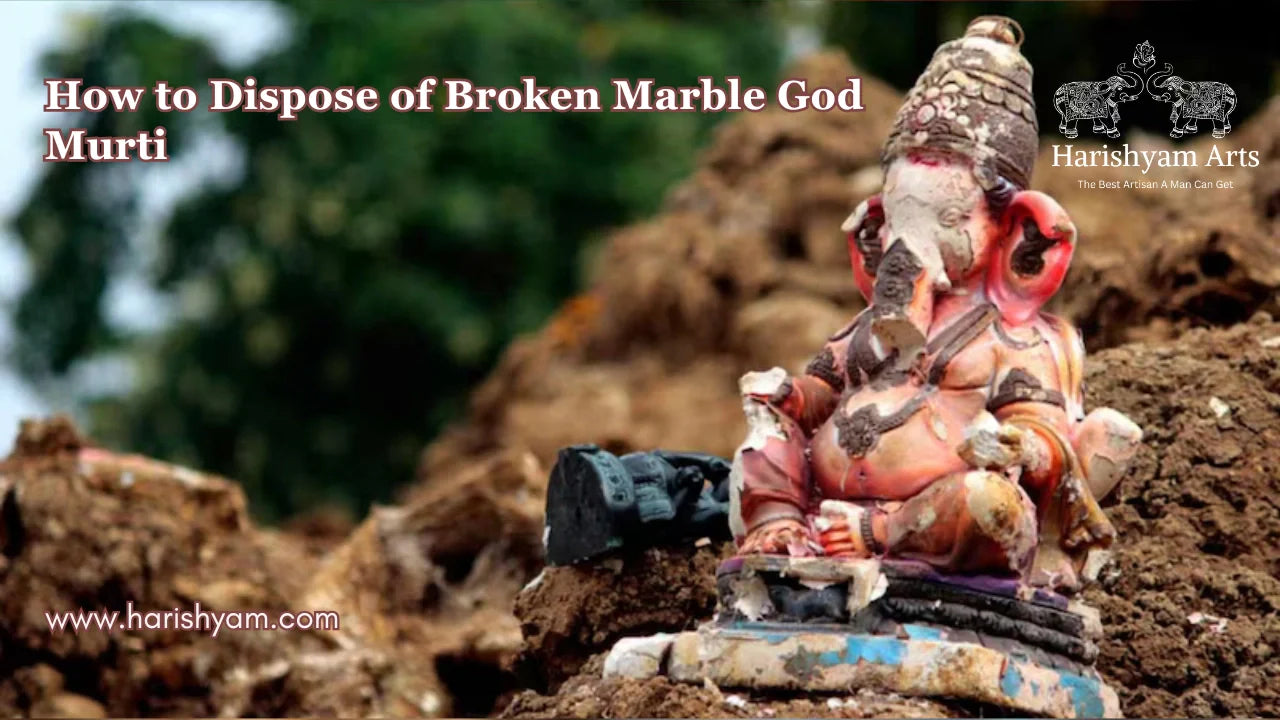
How to Dispose of Broken Marble God Murti
Lakshay Sharma | October 30, 2025
In Hindu tradition, marble murtis represent divine presence and spiritual ener...
Read More...
Wooden Statues vs Marble Statues: Which One Should You Choose?
Lakshay Sharma | October 29, 2025
When it comes to decorating your home or creating a sacred space, choosing the...
Read More...
How a Wooden Temple Enhances Positive Energy in Your Home
Lakshay Sharma | October 28, 2025
A home temple isn’t just a decorative corner — it’s the spiritual...
Read More...
Why Lord Krishna is Worshipped in Different Forms Across India
Lakshay Sharma | October 27, 2025
Lord Krishna — the eighth incarnation of Lord Vishnu — is one of the most belo...
Read More...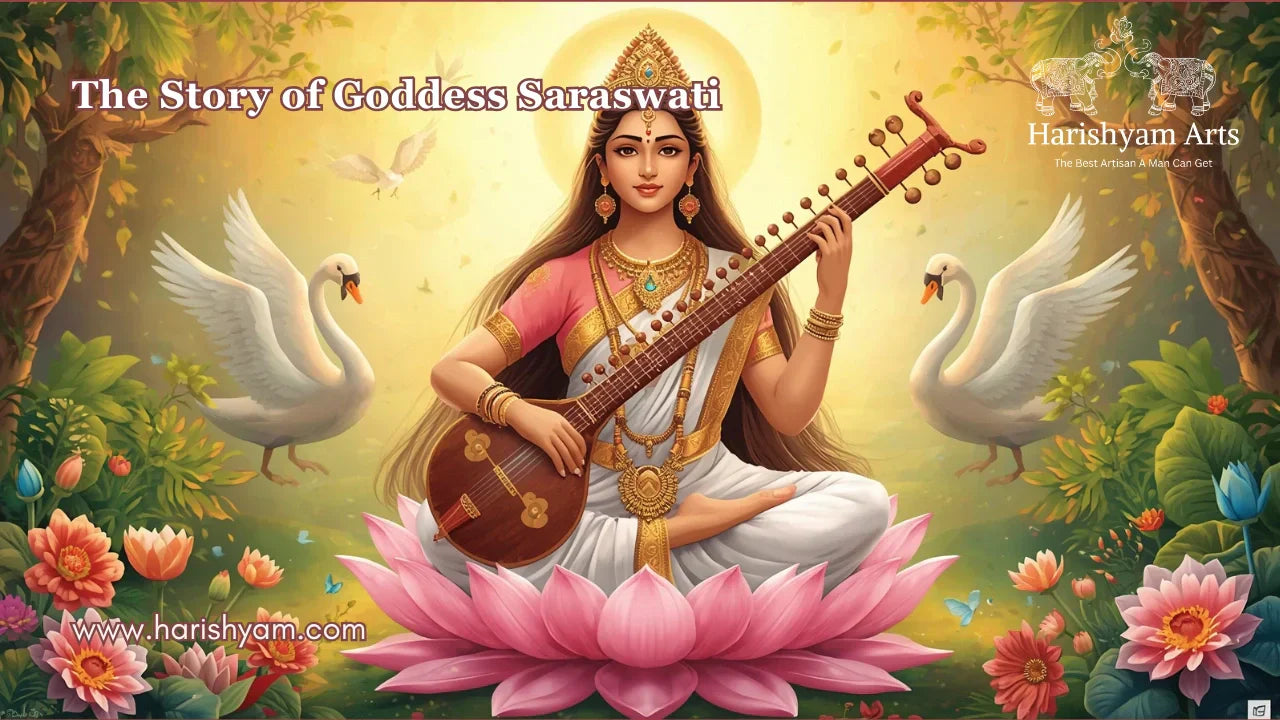
The Story of Goddess Saraswati: The Embodiment of Wisdom and Knowledge
Lakshay Sharma | October 26, 2025
Among the many deities of the Hindu pantheon, Maa Saraswati Read More...

Top Reasons to Choose Brass Statues for Home Décor and Spiritual Spaces
Lakshay Sharma | October 25, 2025
Home décor today is not only about beauty—it’s about creating a peaceful and m...
Read More...
How long do Corian temples last?
Lakshay Sharma | October 24, 2025
Choosing the right material for a temple at home is important for both aesthet...
Read More...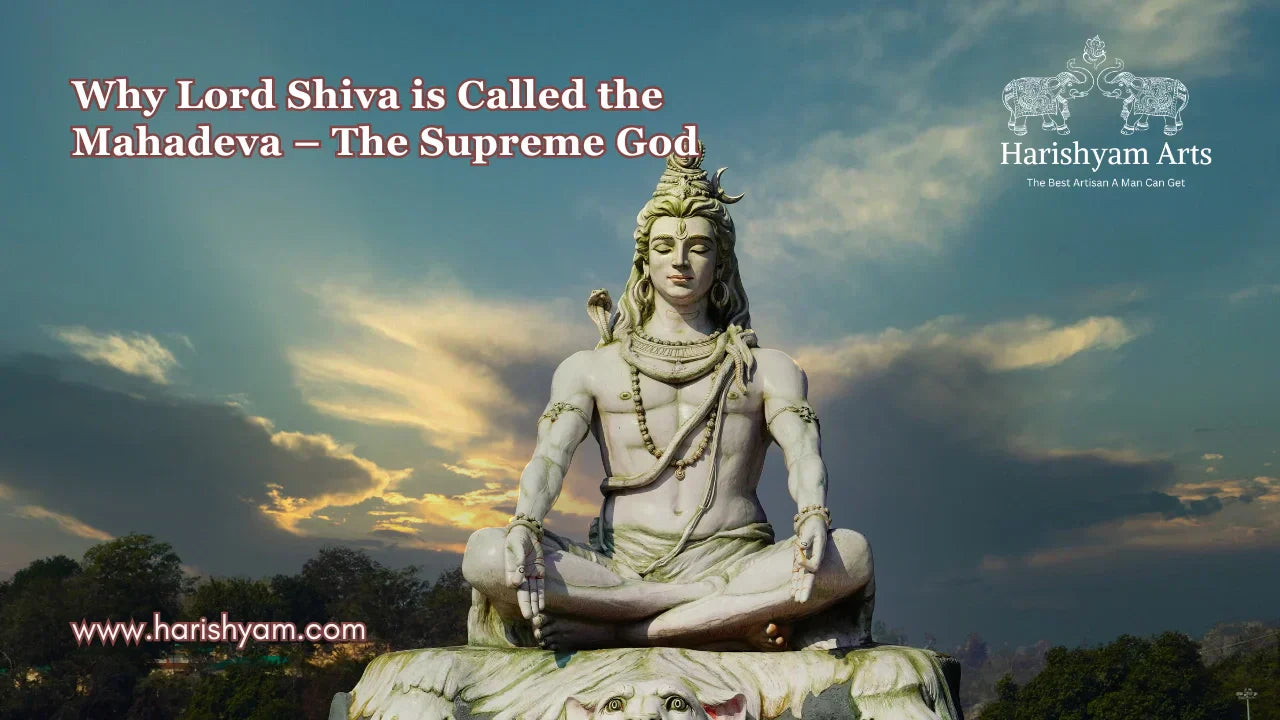
Why Lord Shiva is Called the Mahadeva – The Supreme God
Lakshay Sharma | October 23, 2025
Hinduism, one of the world’s oldest religions, has a rich pantheon of deities,...
Read More...
Why Corian Temples Are Becoming Popular in Contemporary Homes
Lakshay Sharma | October 22, 2025
In today’s modern homes, interior décor blends tradition with contemporary sty...
Read More...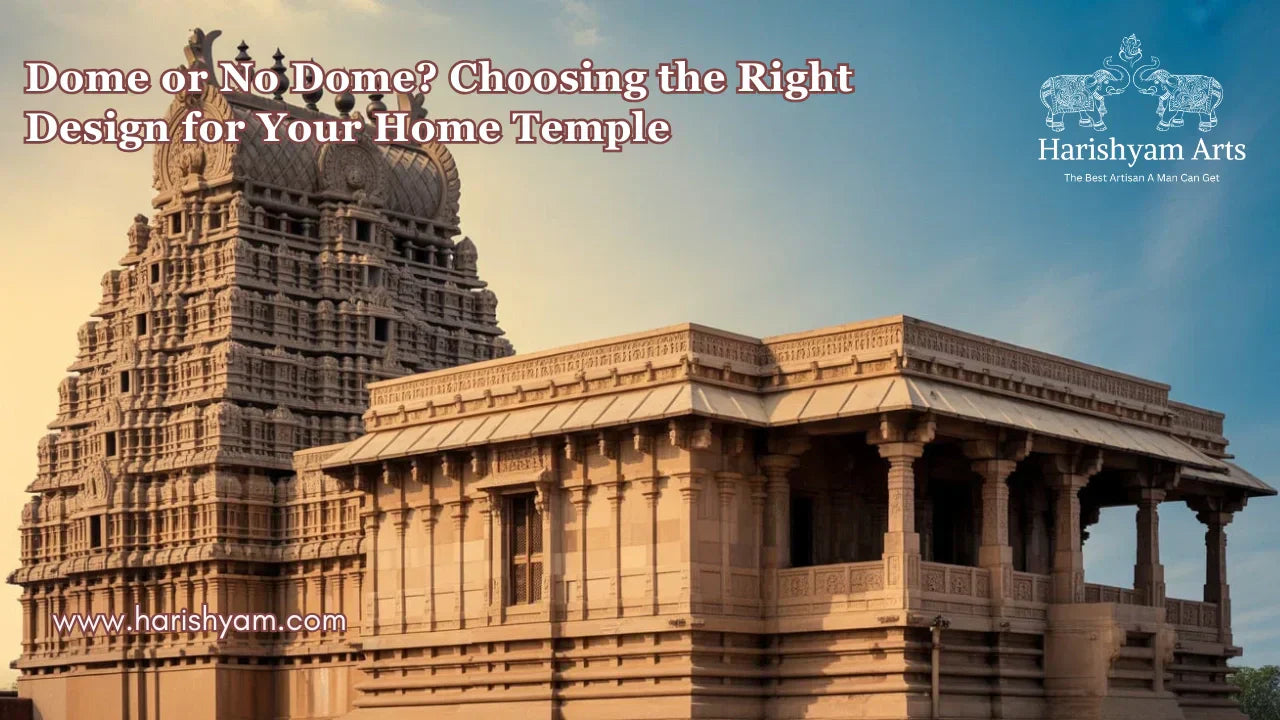
Dome or No Dome? Choosing the Right Design for Your Home Temple
Lakshay Sharma | October 21, 2025
Creating a sacred space at home is a spiritual investment, and the design of y...
Read More...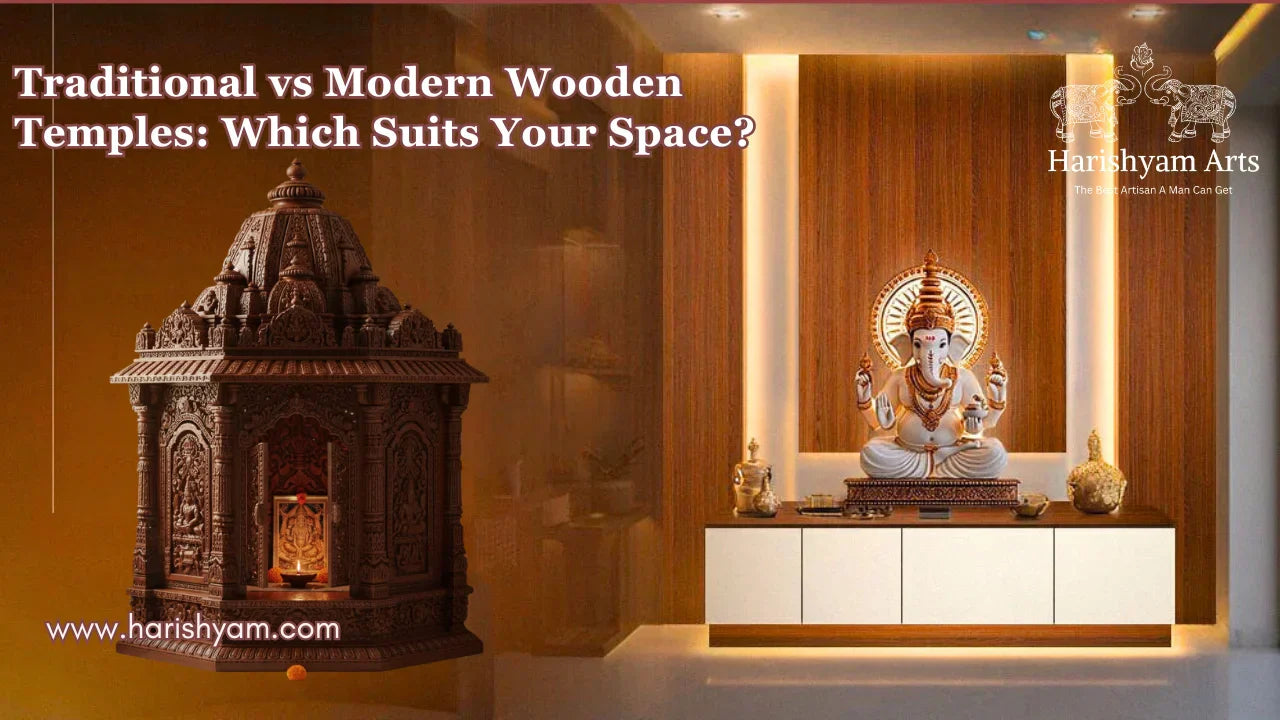
Traditional vs Modern Wooden Temples: Which Suits Your Space?
Lakshay Sharma | October 20, 2025
Creating a sacred space in your home is more than just interior décor — it’s a...
Read More...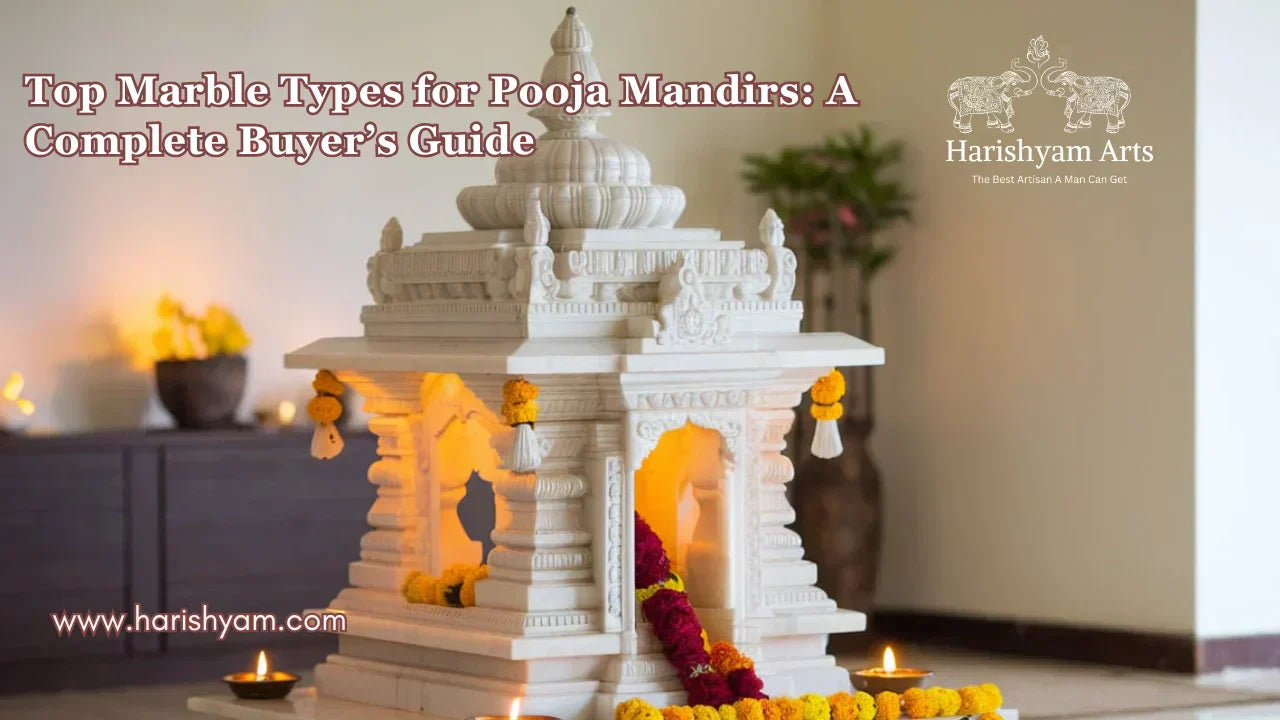
Top Marble Types for Pooja Mandirs: A Complete Buyer’s Guide
Lakshay Sharma | October 19, 2025
A Pooja Mandir is more than just furniture; it is th...
Read More...
The Different Forms of Shiva Statues and their Symbolism
Lakshay Sharma | October 18, 2025
Introduction to the God Shiva Statue
Lord Shiv...
Read More...
Guide to Choosing the Perfect Wooden Statue for Home and Office Décor
Lakshay Sharma | October 17, 2025
Wooden statues are more than decorative pieces—they are timeless symbols of ar...
Read More...
Understanding the Difference Between Handmade and Machine-Made Brass Statues
Lakshay Sharma | October 16, 2025
Brass statues have been a cornerstone of spiritual and decorative art for cent...
Read More...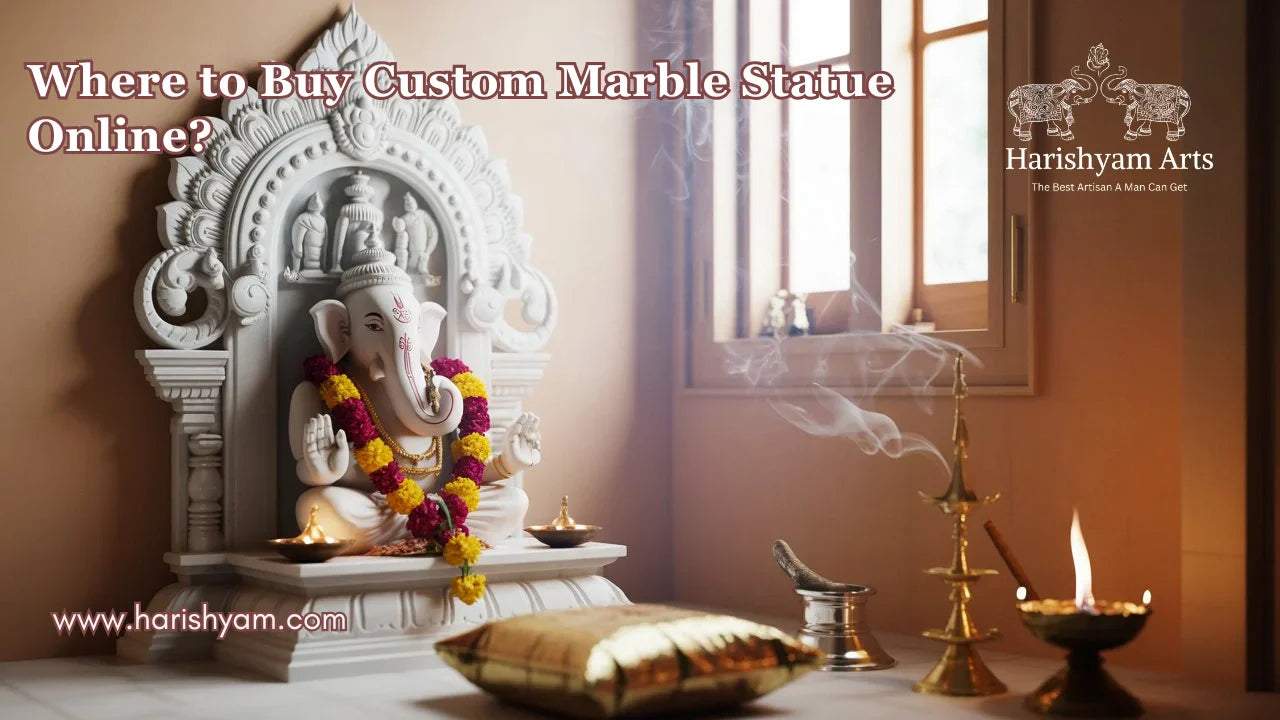
Where to Buy Custom Marble Statue Online? A Complete Guide
Lakshay Sharma | October 15, 2025
Marble statues have always held a special place in Indian homes and temples. T...
Read More...
Mistakes You Shouldn’t Make When Purchasing a Home Temple Online
Lakshay Sharma | October 14, 2025
Buying a home temple online can be an exciting experience — especially with so...
Read More...
Mistakes You Shouldn’t Make When Purchasing a Home Temple Online
Lakshay Sharma | October 14, 2025
Buying a home temple online can be an exciting experience — especially with so...
Read More...
How to Clean and Maintain Wooden Statues at Home
Lakshay Sharma | October 13, 2025
Wooden statues add elegance, tradition, and warmth to any home. From intricate...
Read More...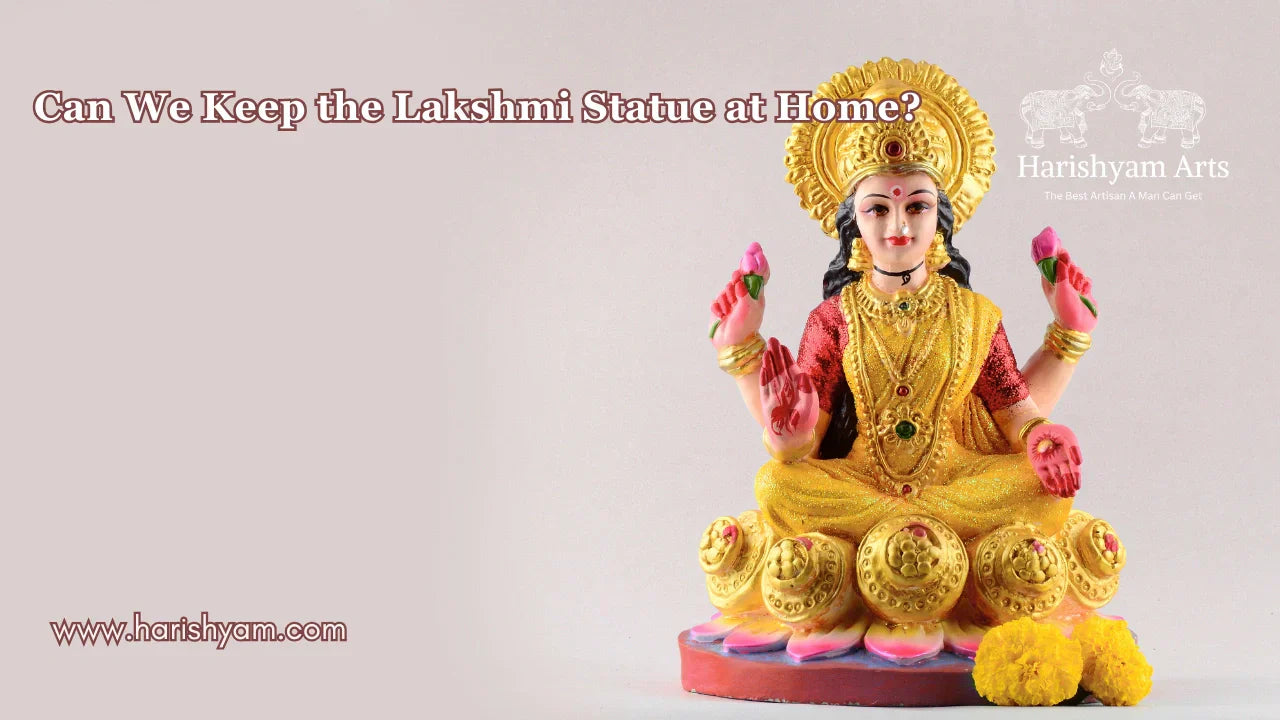
Can We Keep the Lakshmi Statue at Home?
Lakshay Sharma | October 13, 2025
In Hindu tradition, Goddess Lakshmi is worshipped as the divine force of wealt...
Read More...
How to Clean Brass Statues at Home?
Lakshay Sharma | October 12, 2025
Brass statues add a touch of elegance and spirituality to any home. At Harishy...
Read More...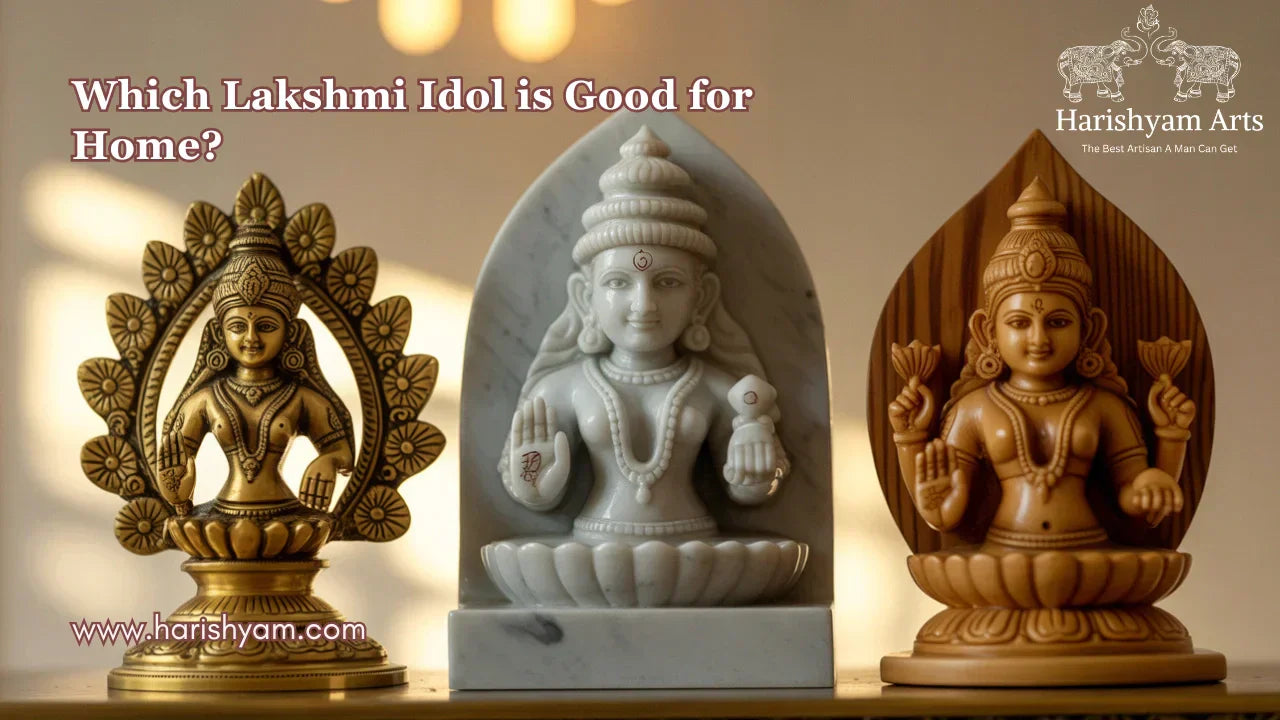
Which Lakshmi Idol is Good for Home? Types, Materials, and Significance
Lakshay Sharma | October 11, 2025
Goddess Lakshmi, the divine symbol of wealth, prosperity, and abu...
Read More...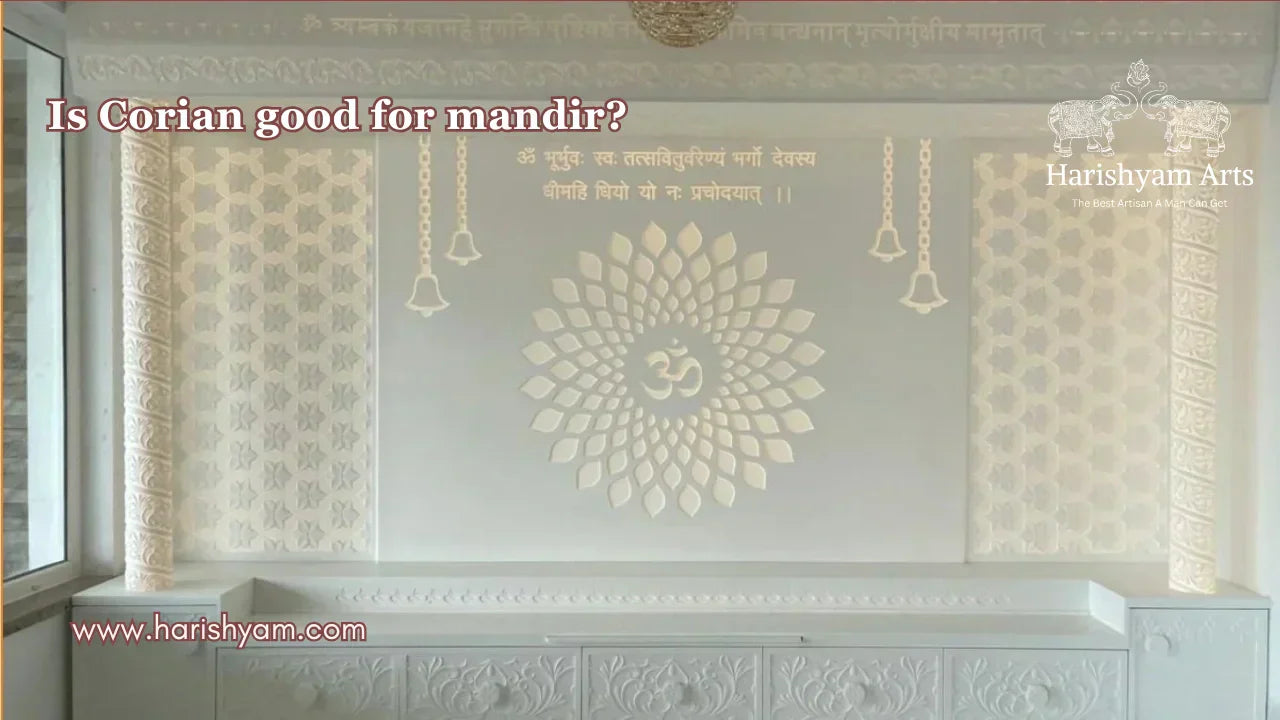
Is Corian Good for Mandir? A Complete Guide
Lakshay Sharma | October 10, 2025
When it comes to designing a home mandir, choosing t...
Read More...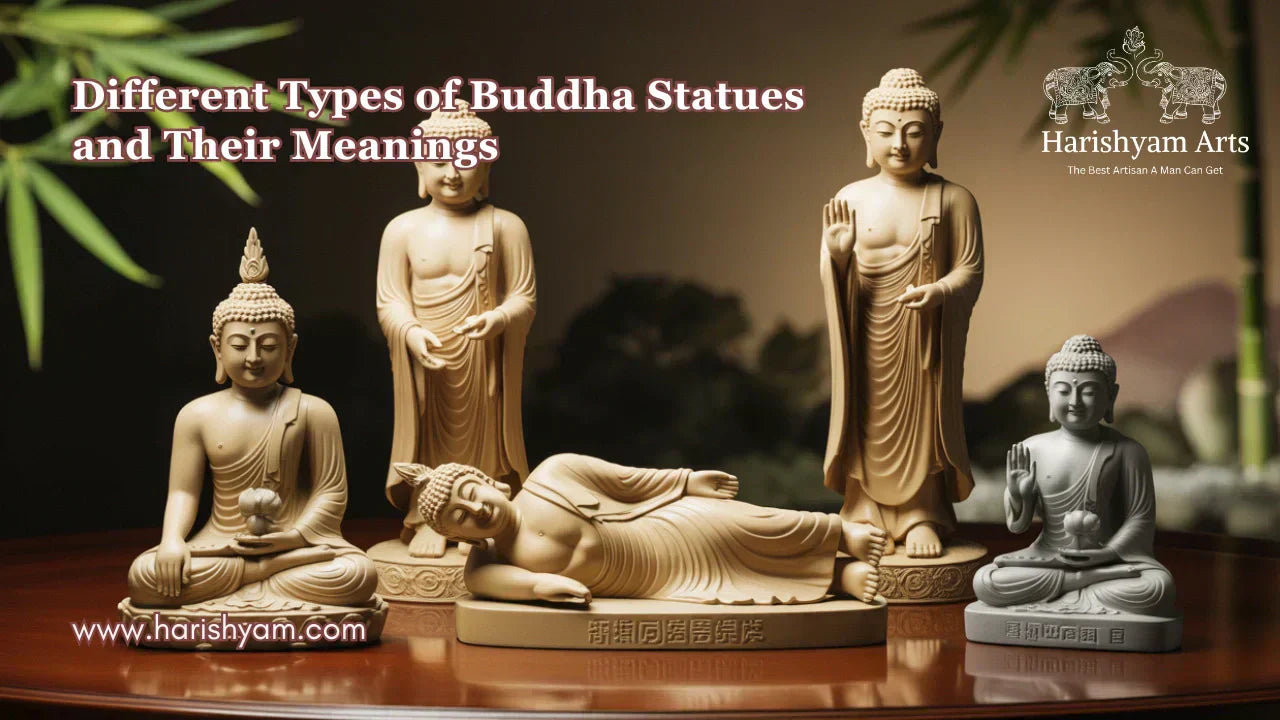
Different Types of Buddha Statues and Their Meanings
Lakshay Sharma | October 09, 2025
Buddha statues are more than just beautiful decorative pieces—they symbolize s...
Read More...
How to Identify a Real Habur Stone? A Complete Guide
Lakshay Sharma | October 08, 2025
Habur stone, known for its mysterious ability to turn milk into curd naturally...
Read More...
How long does Marble Statues Last?
Lakshay Sharma | October 06, 2025
Marble statues can last for centuries, or even thousands of years...
Read More...
Which Wood is Best for Home Mandir?
Lakshay Sharma | October 05, 2025
A home mandir is not just a piece of furniture; it is the spiritual heart of y...
Read More...
How to Choose a Krishna Idol for Your Home
Lakshay Sharma | October 04, 2025
Choosing the perfect Krishna idol for your home is more than just selecting a ...
Read More...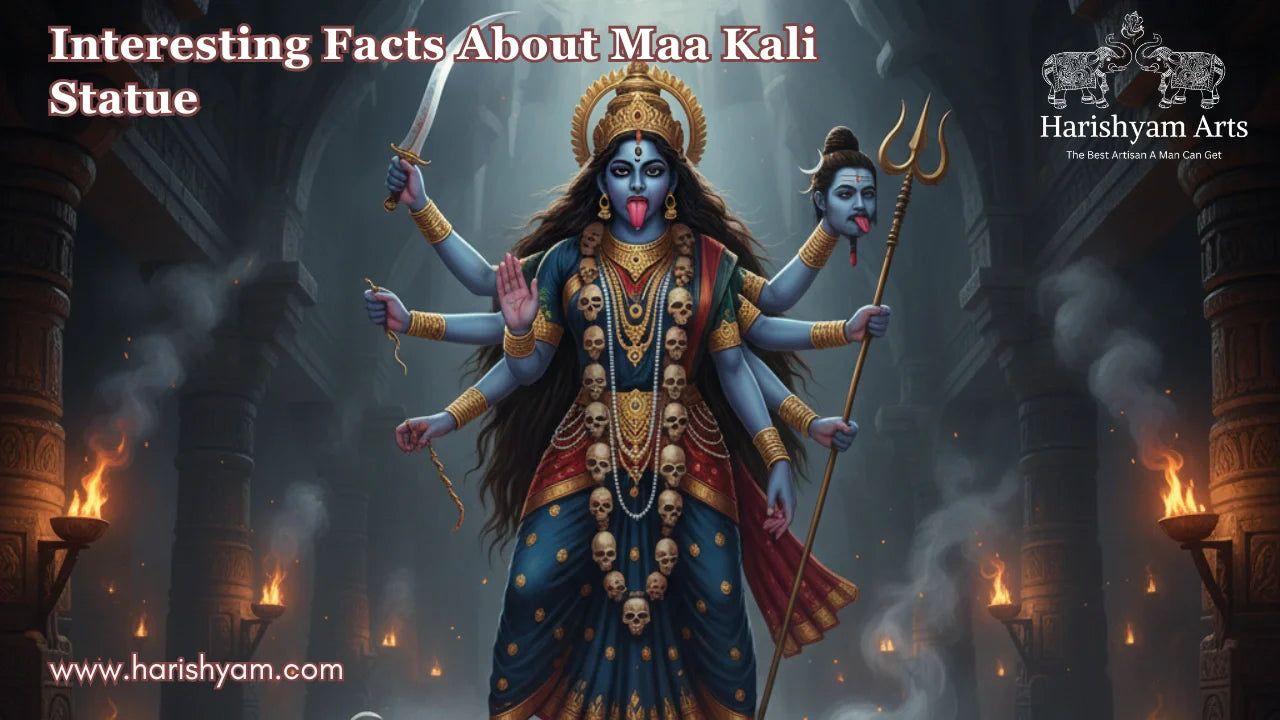
Interesting Facts About Maa Kali Statue
Lakshay Sharma | October 02, 2025
Introduction
Among the many divine forms of Go...
Read More...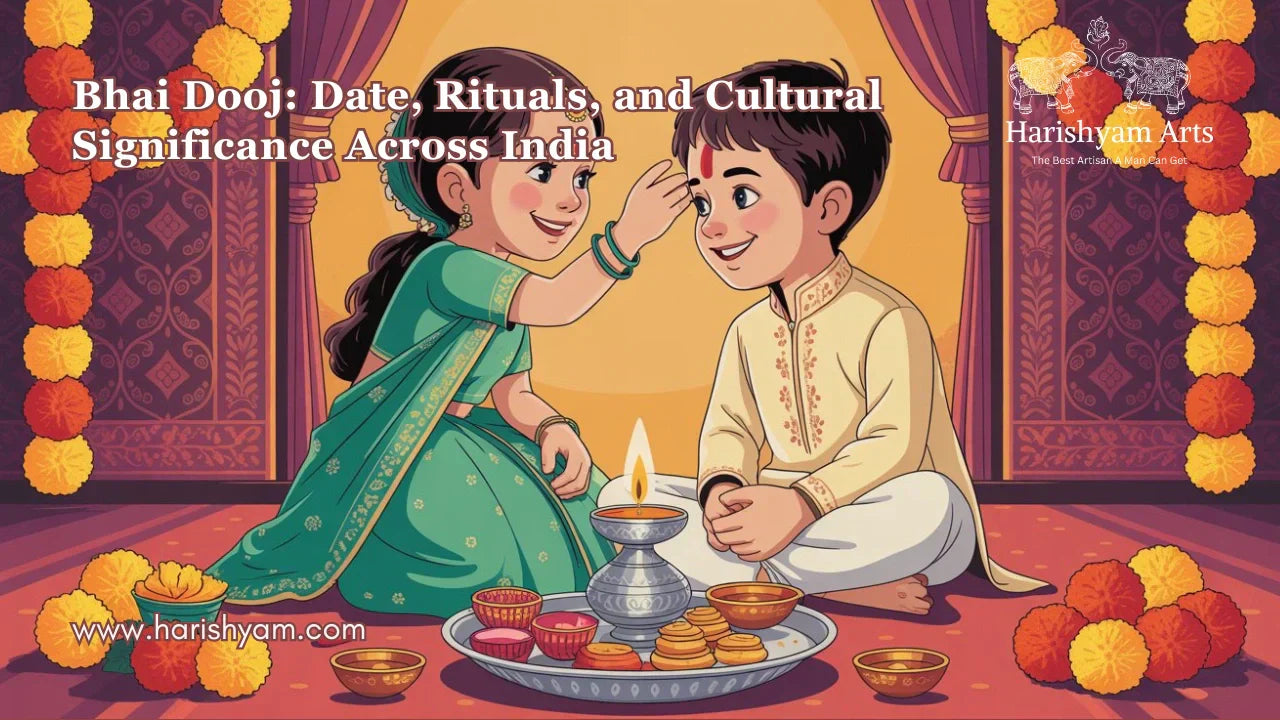
Bhai Dooj 2025: Date, Rituals, and Cultural Significance Across India
Lakshay Sharma | October 01, 2025
Bhai Dooj, also known as Bhaiya Dooj, Bhai Tika, or Bhau Beej Read More...

Why Do We Celebrate Govardhan & How to Do Govardhan Puja at Home
Lakshay Sharma | October 01, 2025
The story of Govardhan is linked to Lord Krishna’s childhood in Vrindavan. The...
Read More...
Dussehra (Vijayadashami) 2025: History, Story, Significance, Puja Rituals and Celebrations
Lakshay Sharma | September 26, 2025
India is often called the land of festivals, where every celebration carries d...
Read More...
2025’s Best Antique & Luxury Brass Door Designs for Homes
Lakshay Sharma | September 02, 2025
Brass doors have always been a symbol of strength, elegance, and heritage. In ...
Read More...
Navratri Day 9 – Maa Siddhidatri Aarti Lyrics
Lakshay Sharma | September 01, 2025
नवरात्रि के नौवें दिन की देवी हैं मां स...
Read More...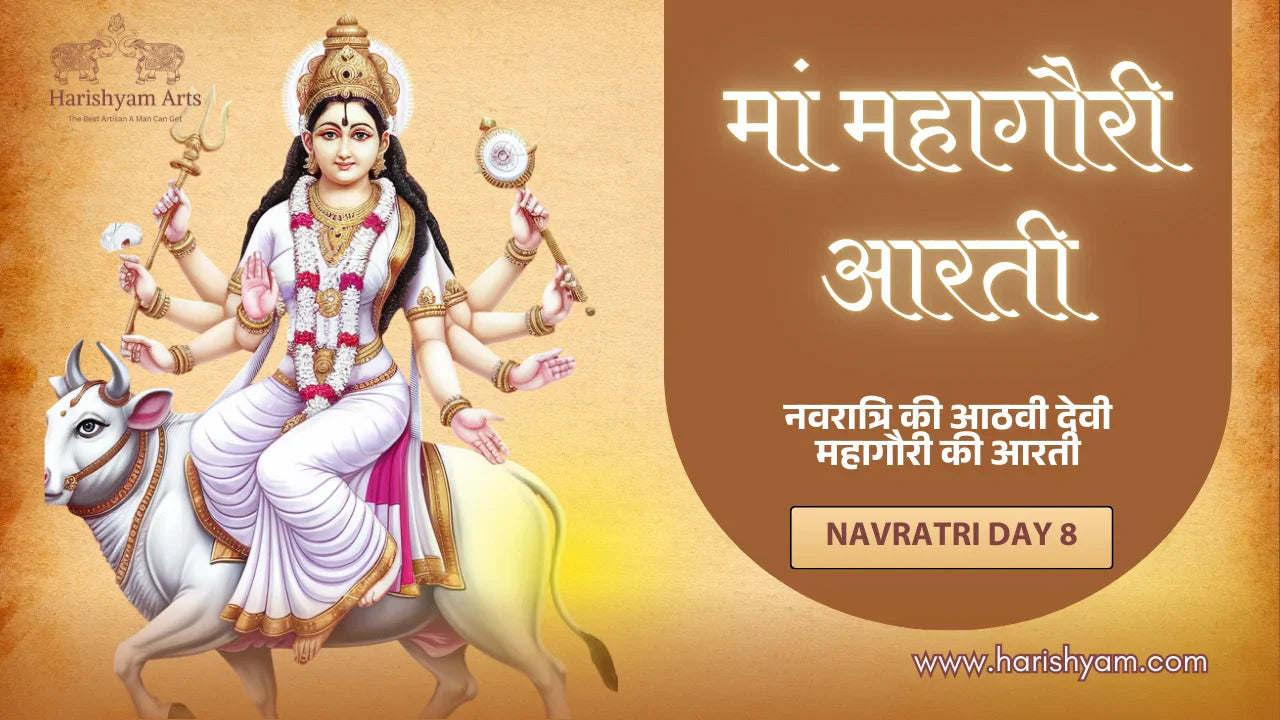
Navratri Day 8 – Maa Mahagauri Aarti Lyrics
Lakshay Sharma | September 01, 2025
नवरात्रि के आठवें दिन की देवी हैं मां म...
Read More...
Navratri Day 7 – Maa Kalratri Aarti Lyrics
Lakshay Sharma | September 01, 2025
नवरात्रि के सातवें दिन की देवी हैं मां ...
Read More...
Navratri Day 6 – Maa Katyayani Aarti Lyrics
Lakshay Sharma | September 01, 2025
नवरात्रि के छठे दिन की देवी हैं मां कात...
Read More...
Navratri Day 5 – Maa Skandamata Aarti Lyrics
Lakshay Sharma | September 01, 2025
नवरात्रि के पांचवें दिन की देवी हैं मां...
Read More...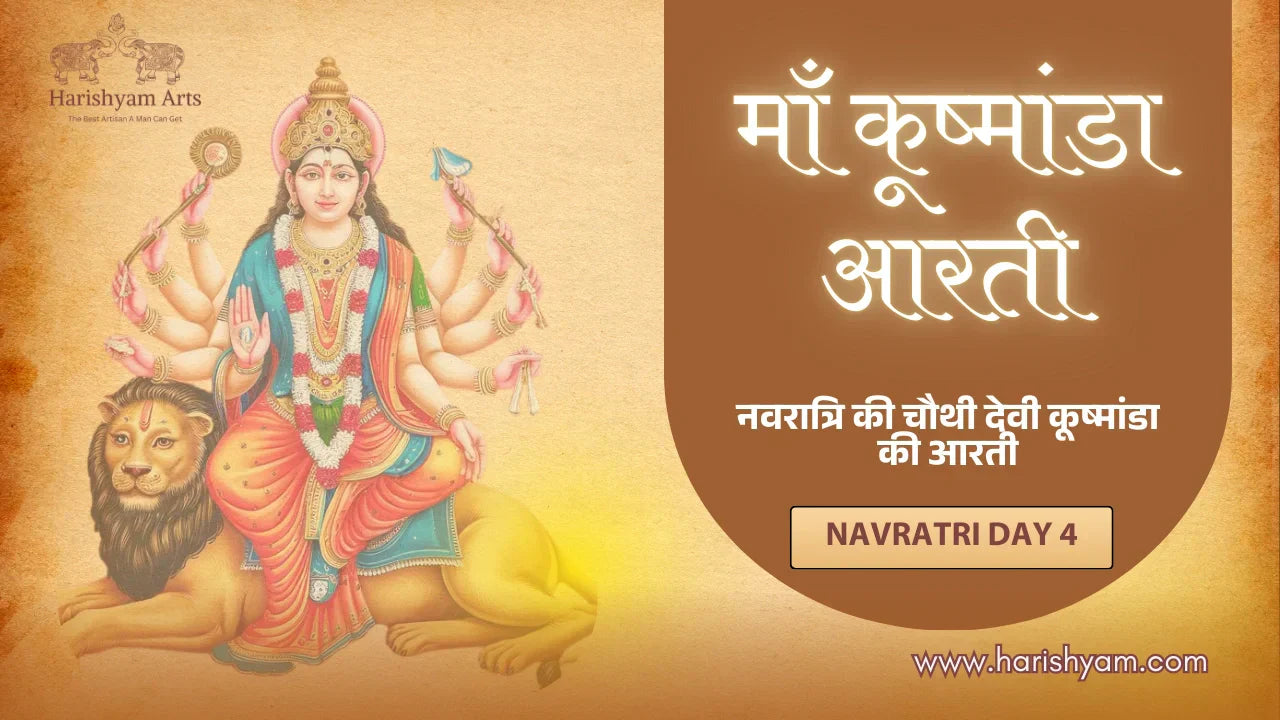
Maa Kushmanda Aarti – Navratri Day 4 Aarti Lyrics
Lakshay Sharma | September 01, 2025
नवरात्रि के चौथे दिन भक्तगण मां कूष्मांडा की पूजा कर...
Read More...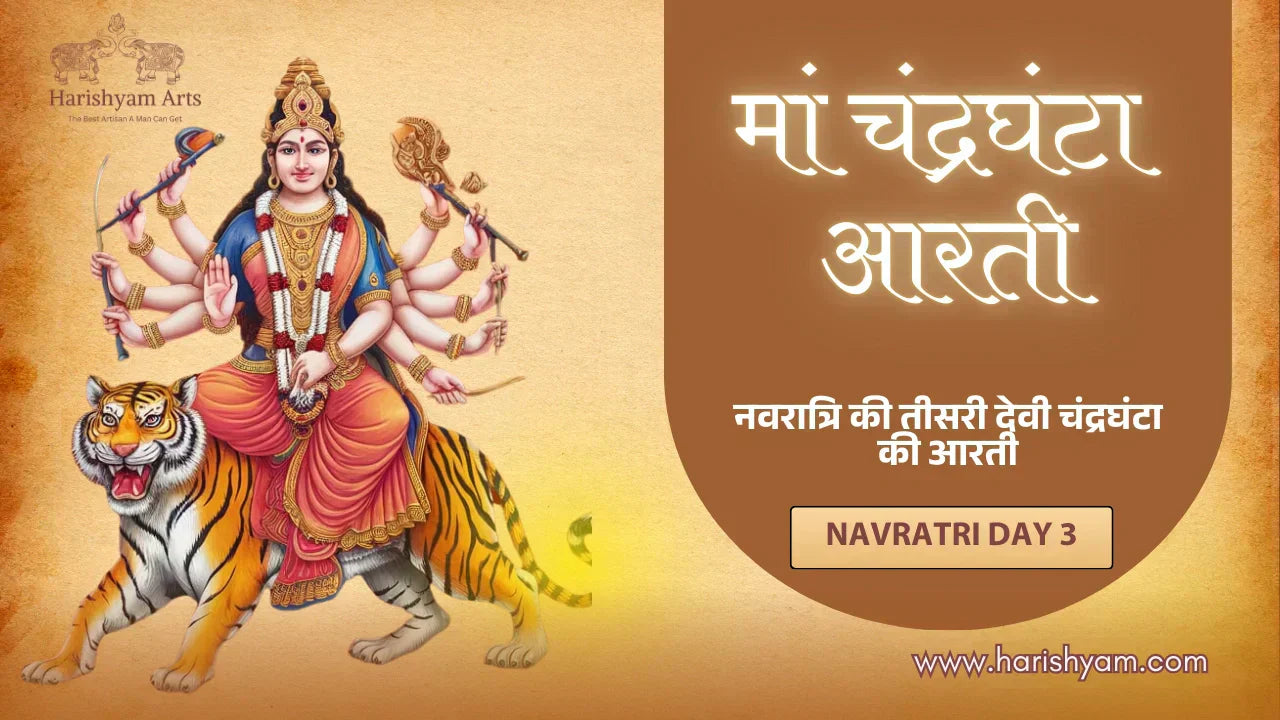
मां चंद्रघंटा की आरती – Navratri Day 3 Aarti Lyrics
Lakshay Sharma | September 01, 2025
नवरात्रि के तीसरे दिन भक्तगण मां चंद्रघंटा की पूजा औ...
Read More...
मां ब्रह्मचारिणी की आरती – Navratri Day 2 Aarti Lyrics
Lakshay Sharma | September 01, 2025
नवरात्रि के दूसरे दिन भक्तगण मां ब्रह्मचारिणी की आरा...
Read More...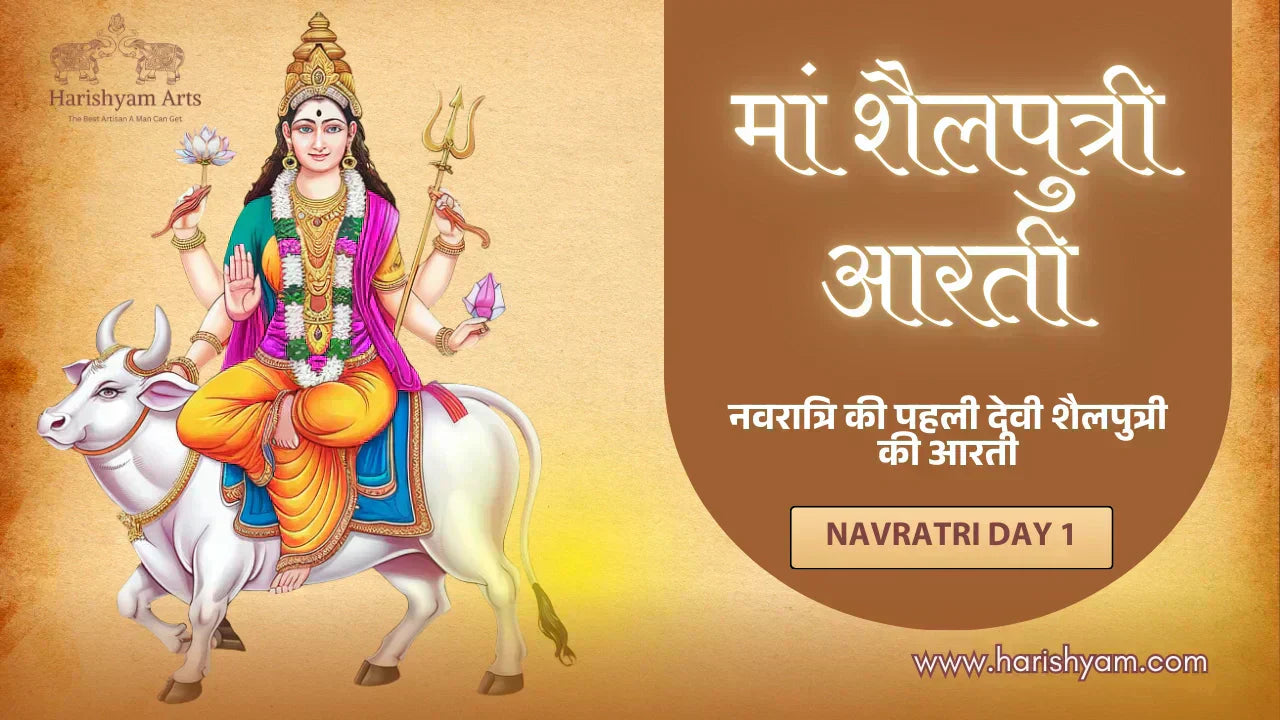
मां शैलपुत्री की आरती – नवरात्रि प्रथम दिन
Lakshay Sharma | September 01, 2025
नवरात्रि का पहला दिन मां शैलपुत्री की पूजा के लिए सम...
Read More...
10 Classical Bedroom Designs That Will Stay in Style in 2025 and Beyond
Lakshay Sharma | August 27, 2025
When it comes to designing a bedroom, classical interiors<...
Read More...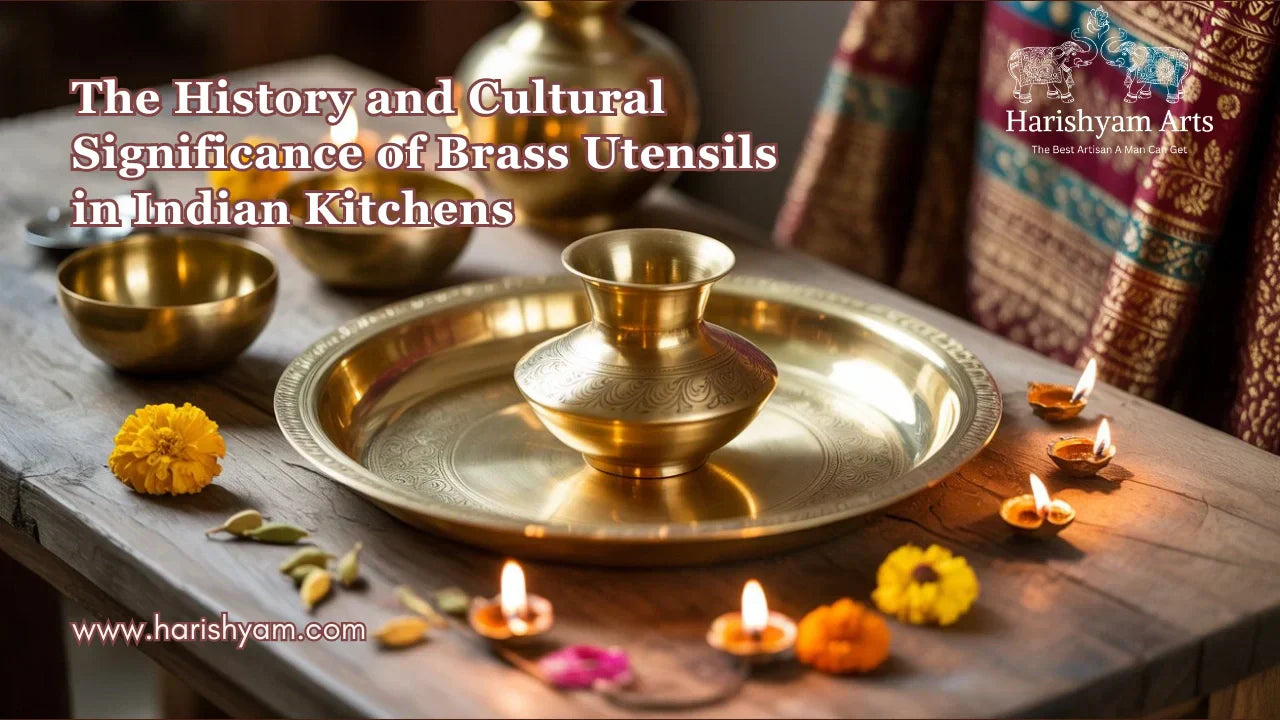
The History and Cultural Significance of Brass Utensils in Indian Kitchens
Lakshay Sharma | August 07, 2025
The gleaming golden surfaces of brass utensils have illuminated Indian kitchen...
Read More...
Health Benefits of Kansa Bronze Cookware: Backed by Tradition and Science
Lakshay Sharma | August 06, 2025
The resurgence of traditional cookware in modern kitchens isn't just about nos...
Read More...
How to Use Copper Utensils Without Risk of Toxicity
Lakshay Sharma | July 30, 2025
Copper utensils have long held a place of pride in traditional kitchens, thank...
Read More...
10 Stunning Mandir Designs Under the Staircase
Lakshay Sharma | July 28, 2025
In today’s space-conscious homes, especially in urban apartments or duplexes, ...
Read More...



